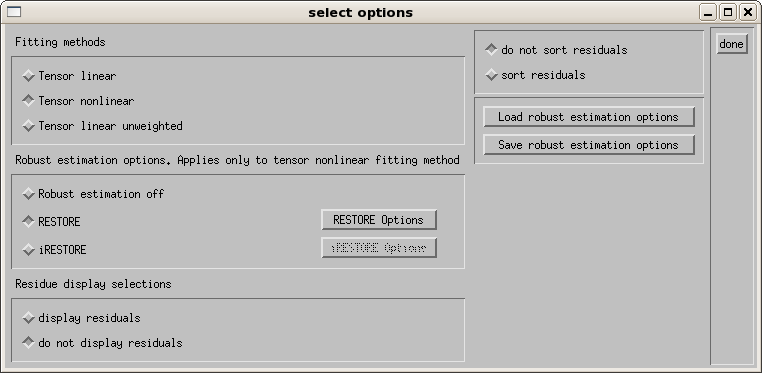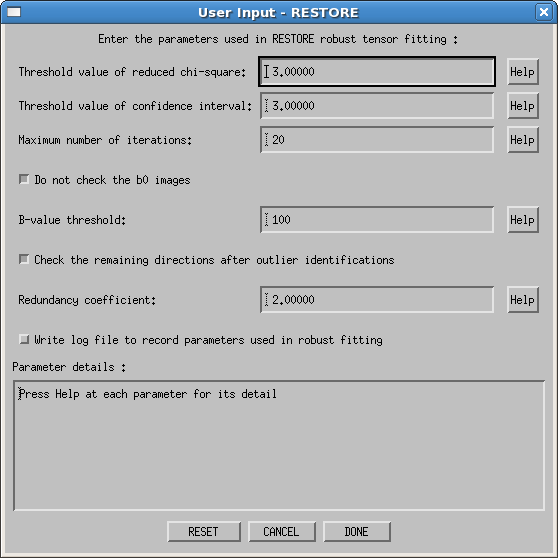3.2.7.1 RESTORE Options
When you select RESTORE, you are able to set additional options using the RESTORE Options button.

The RESTORE options menu, as shown below, is populated with reasonable default values. For description of each parameter, click on the "help" button, and a message will be displayed in the Parameter details box at the bottom. These parameters are briefly described below the figure.

- Threshold value of reduced chi-square - RESTORE is only run if the data fails to reach a "quality" threshold, which can be user define. This threshold, based on the chi-square goodness of fit measure, is automatically computed for your data based on the formula provided in the "help". However, if the user wishes to be more or less stringent, the value can be set manually here.
- Threshold value of confidence interval - By default, RESTORE rejects data points that lie 3 standard deviations away from the mean of the expected distribution of datapoints.
- Maximum number of iterations - The maximum number of iterations allowed for RESTORE to converge.
- Do not check the b0 images - Default value = do not check. The non-diffusion weighted (b0) images generally show different variance properties than the diffusion weighted images. As such, RESTORE is not optimized to identify outliers in the b0 images. We recommend leaving this at the default value. All voxels of all b0 images will be included in the tensor fitting.
- B-value threshold - The b-value of each volume is determined from the b-matrix. Due to imaging gradients, rotations of the b-matrix from motion correction, or acquisition of non-zero low b-value images, means that the b-value of the b0 image may not be exactly 0. The user can input a minimum value below which images are not considered for outlier detection. Default value is 100.
- Check the remaining directions after outlier identifications - this is a newer feature of RESTORE that checks that the b-matrix is not ill-defined after removal of data points (i.e. ensures that enough data remains in all diffusion encoding directions). Default value is "on", and we recommend that this check be performed.
- Redundancy coefficient - Determines the minimum amount of data required in each encoding direction. More details of this coefficient can be found in Chang, et al.1
- Write log file to record parameters used in robust fitting - a log file can be written to keep track of parameters used.
